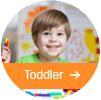Teaching Science at The Early Learning Centre – Bedfordale and Surrounds
For many years, successive Australian governments have stressed the need to increase the number of STEM (Science, Technology, Engineering & Mathematics) graduates.
For an early learning centre, Bedfordale or elsewhere, this means starting early!
Why should an early learning centre, Bedfordale or elsewhere, teach science?
As toddlers change into pre-schoolers, attitudes and interests are beginning to form. Even at these young ages, children start to form views about what they’re ‘good at’ and ‘not so good at’.
Of course, they will undergo many evolutionary changes over the years ahead. Children’s interests at five might bear little resemblance to those they’ll have 5 to 10 years later. Even so, there is now powerful evidence that starting children’s exposure and insight into technology and science at young ages may encourage them to study these areas further in later years.
Starting ages for teaching science
Children without knowing it, will start to observe and use science from a very early age. Even very young toddlers can quickly discover through experimentation, how to increase the stability of their building block structures by placing larger bricks on the base and smaller ones above. They might not consider this ‘experimentation’ and ‘science’ but they show when doing so that they’re aware of the need to manipulate volume and weight to achieve an objective.
This seemingly natural disposition to problem solve is something an early learning centre will concentrate on developing further.
Shaping views
An essential component of STEM skills is to ask “why?” and “how?”.
These can be difficult orientations to teach. Some children will, almost naturally, take an object and try to dismantle it to see how it works or to change it. Some typically won’t and will be content to play with something without question, using its function alone as the basis for their game.
While both mindsets are important, the former is a platform for encouraging further STEM-orientation interest. By contrast, the latter mindset shows the deployment of imagination, something that’s also important but also needs to be supplemented by exposure to those “why” and “how” questions mentioned above.
Encouraging interest
Previously, people observed some of the above initial differences between children and automatically attributed the former as likely to be good later on with STEM subjects and the latter as potentially ‘artistic’.
Today, that distinction has largely been dismissed for very young children.
These early indications probably suggest that different children need different stimuli to become interested in a subject. Whilst one child might automatically pick up a model car and look to see how the wheels fix on, another may do so if they’re told a story involving changing the wheels on a car beforehand.
This is a simplified example but it illustrates some of the techniques the early learning centre will use to encourage children to think about the world around them and how it works.
What science can be taught at preschool ages?
By the age of around 5, assuming an early earning centre approach, children should be able to:
- understand and use simple numbers and very simple ‘sums’;
- show they understand and can manipulate in simple experiments, the concepts of weight and volume (scales, simple puzzles etc.);
- measure things;
- demonstrate that they understand the difference between assertion and something that is supported by fact in the shape of experimental evidence;
- engage in simple supervised experiments and show they understand what the results mean;
- question explanations and the facts supporting conclusions;
- conduct simple surveys and data then analyse them (e.g. heights of children in the class and averages);
- design and construct models out of blocks (or similar) of varying degrees of complexity;
- evidence that they understand cause-and-effect where experiments are concerned.
This is a very brief list but gives some indications of the objectives of early STEM teaching.
A final word on the ‘T’
It’s important not to confuse the concepts of using technology with understanding it.
So, while some centres might make various forms of IT available to children in their care to help them have fun, that is potentially a different thing to helping children understand how it works and relates to the wider world of science, maths and engineering.
A true early learning centre will differentiate between the two things as part of its program.













